When packing for the trip, I aimed to keep my gear as light as possible and decided to hike in my trail running shoes instead of hiking boots — though many prefer boots for their sturdiness and better protection in wet terrain or unpredictable weather.
That afternoon was spent getting my backpack ready with everything needed for the planned three-day hike.
- Tent
- Sleeping bag
- Mattress
- Clothes
- Toiletries
- Rain gear
- Food for three days
- Two big bottles of water
- Camping stove
Note: Most people bring walking sticks since they help with balance and take some strain off the knees. I regret not bringing.
The rest of my gear was left in a lockable box in the main camping building in Nikkaluokta, while the bicycle was securely parked nearby.
The hike ahead of me was in total 56 kilometers—40 kilometers to the mountain lodge and back, and 18 kilometers to the top of the mountain and back—with roughly 2,000 meters of elevation gain.
Day 1: Getting to the Mountain Lodge
The next morning, I slept as long as I could to recover. As soon as I stepped out of the tent, my legs were already protesting, but I figured they’d loosen up once the blood started to flow and got moving.
I packed my tent, sleeping bag and sleeping mattress, attached them to my hiking backpack, and was ready to set off. After a kilometer, I felt better. The trail running shoes were comfortable, and my legs were grateful.
The path was clearly marked with orange spray-painted dots along the route and was quite flat in elevation. The ground varied between simple soil, wooden planks and rocks, and I had to watch my step since it was easy to twist an ankle. I often caught myself staring at the ground instead of enjoying the views.
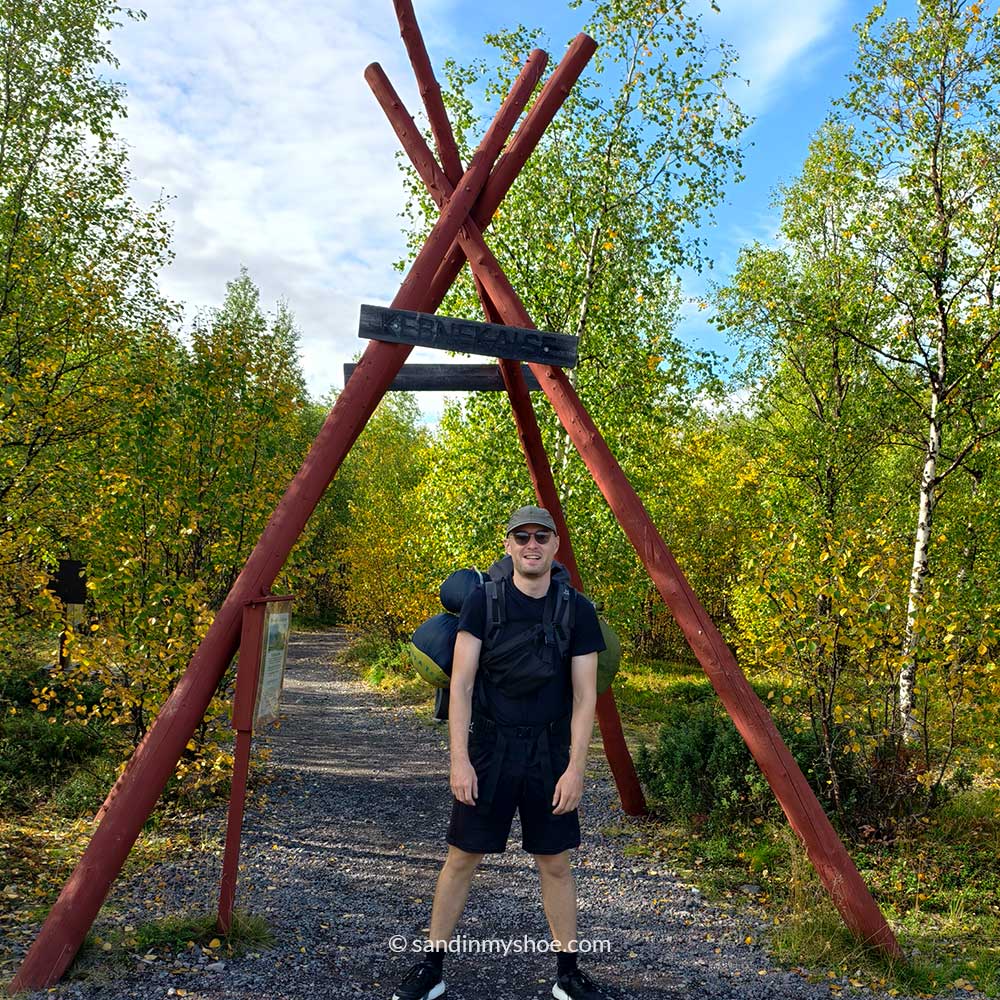
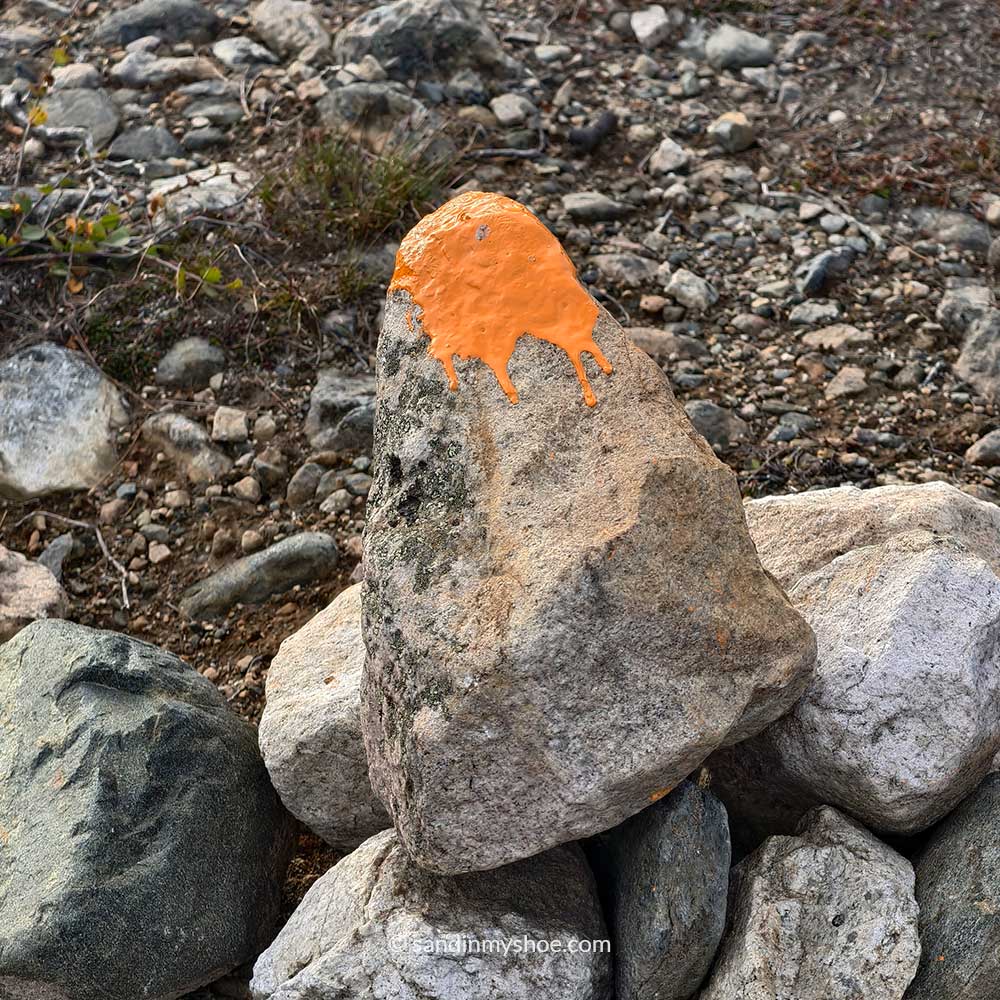
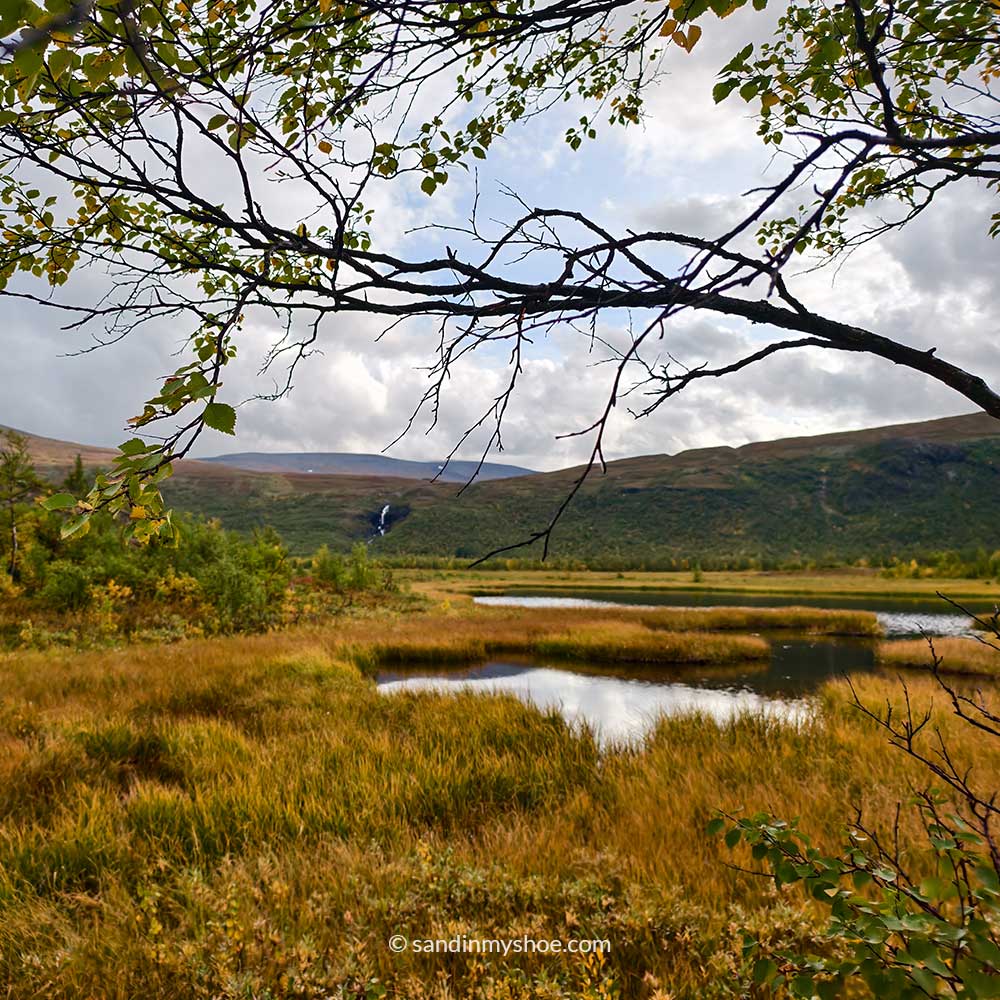
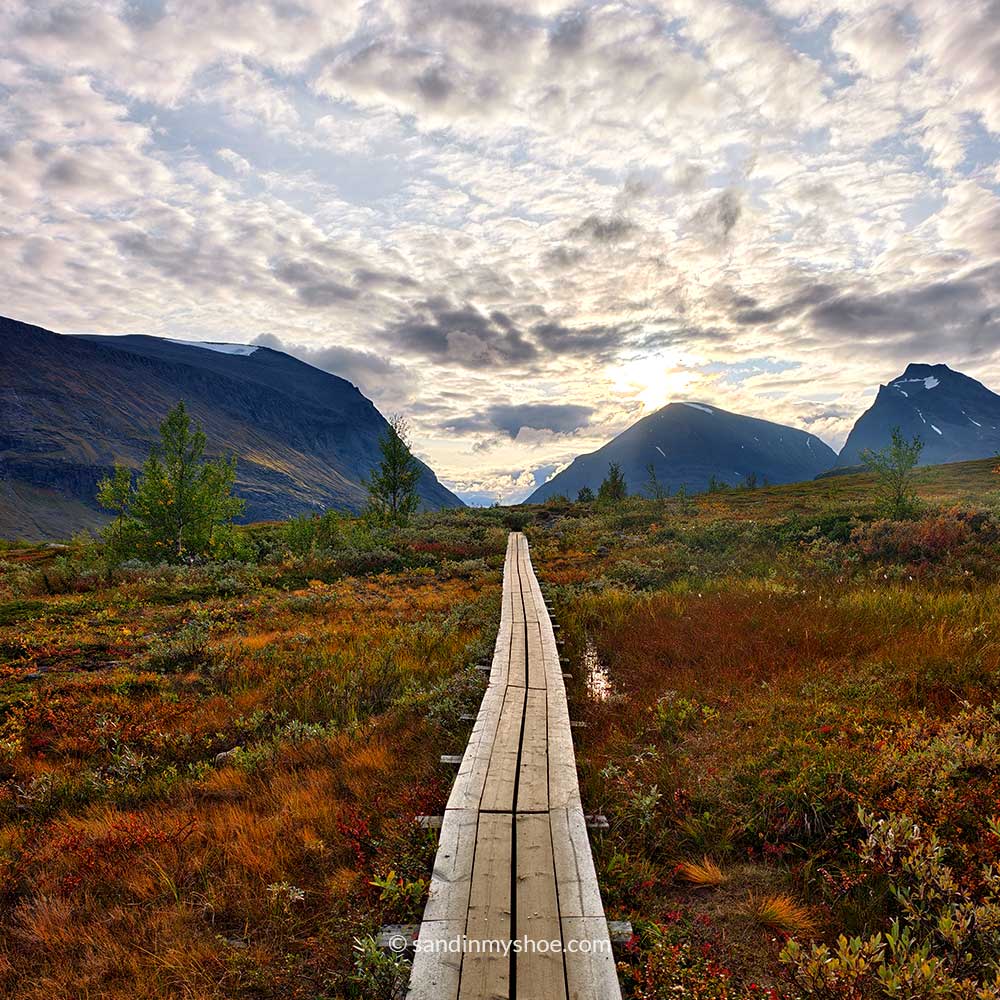
The trees thinned, replaced by low tundra vegetation. In the distance, clear glacial lakes shimmered beneath majestic mountains—setting the mood for the actual summit. About five kilometers into the hike, I reached a large lake where I could have taken a boat for the next six kilometers. But after cycling 1,500 kilometers to get here, sitting in a boat didn’t make much sense—so I kept walking.
I’d already met more travellers than I had during the entire bike trip. This area draws tens of thousands of hikers each year, mostly between mid-June and mid/late September. On average you’ll have around 100 people hiking simultaneously per day, but probably much more during a clear day than on a rainy day.
Around halfway, my legs grew heavier and my knees started to ache. The trail was tougher than I’d expected. As I neared the mountain lodge, the tents appeared, scattered nearby the lodge.
All I could think about was a cold, celebratory beer. I sat down, quietly enjoying it while checking the weather for the next day’s summit. It was looking great with sunshine and blue skies. The following days were forecasted to bring heavy rain and mist. I was pleased.
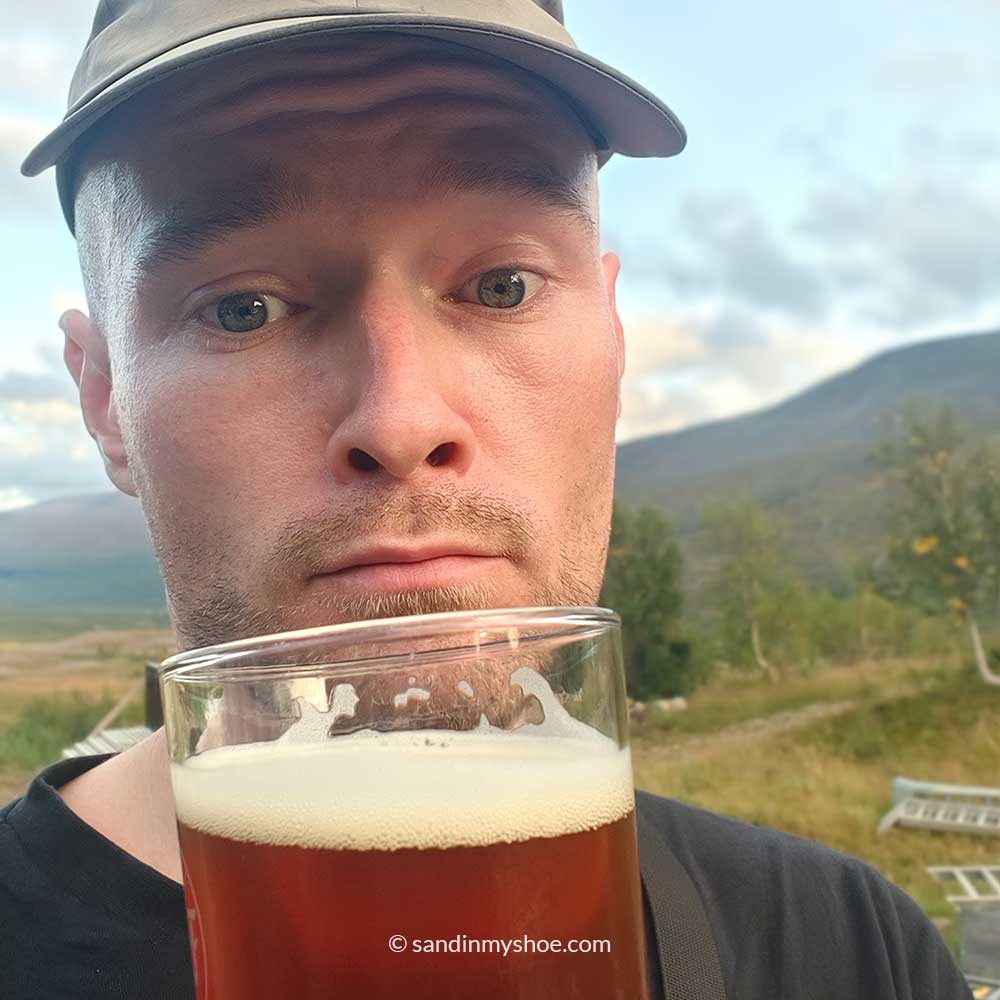
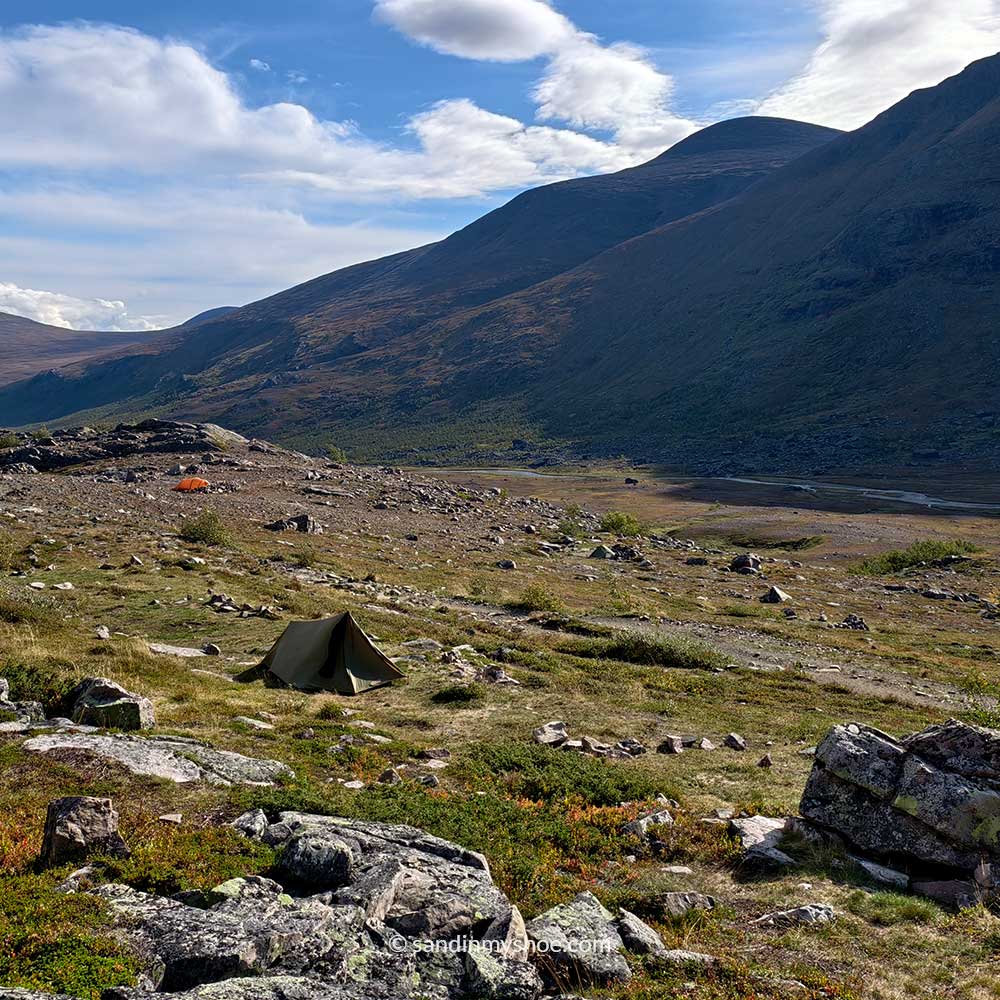
When I tried to stand up, my legs didn’t respond. I’d pushed them too much, burnt through every bit of energy. I forced myself up, feeling like I was about to faint, and held the wall for balance. Slowly I started to waddle stiffly like a penguin until blood returned to my legs and could use my muscles again. I’d never felt fatigue like this before.
I had to reconsider the plan. Waddle up tomorrow like the Penguin in Batman or take a rest day and climb in the rain? As I found a spot for the tent, the answer became obvious—I needed a rest day. Better to have energy for the climb than sunshine without strength. That night, I loaded up on carbs to the maximum level and slept deeply.
Day 2: Rest Day at the Foot of Kebnekaise
The sun warmed my tent as I slowly woke and boiled water for coffee. I opened the tent slightly, taking in the majestic view while enjoying my cup. The weather was impeccable
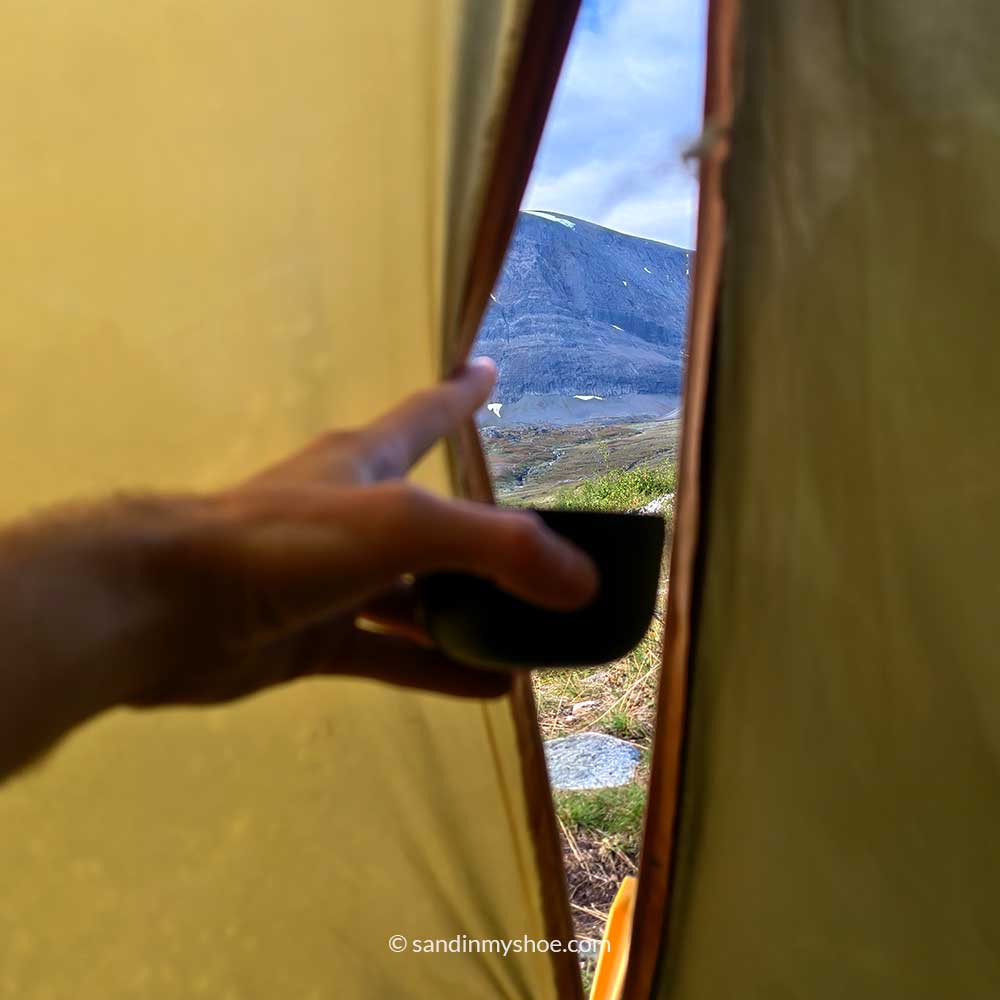
The whole day was in front of me with plenty of time to rest or wander, as nature made it hard to stay still. I had no water left, though a river glimmered in the distance. I walked to the river, which took a while, but it was worth it — the glacial water, cold and refreshing, was probably the best I’d ever tasted. The landscape looked like something from a postcard: a clear river winding through tundra, the mountains standing tall with clouds gathering behind them. Kebnekaise wasn’t visible from here — I’d have to hike between the two peaks, and only then would it appear, if the weather was clear.
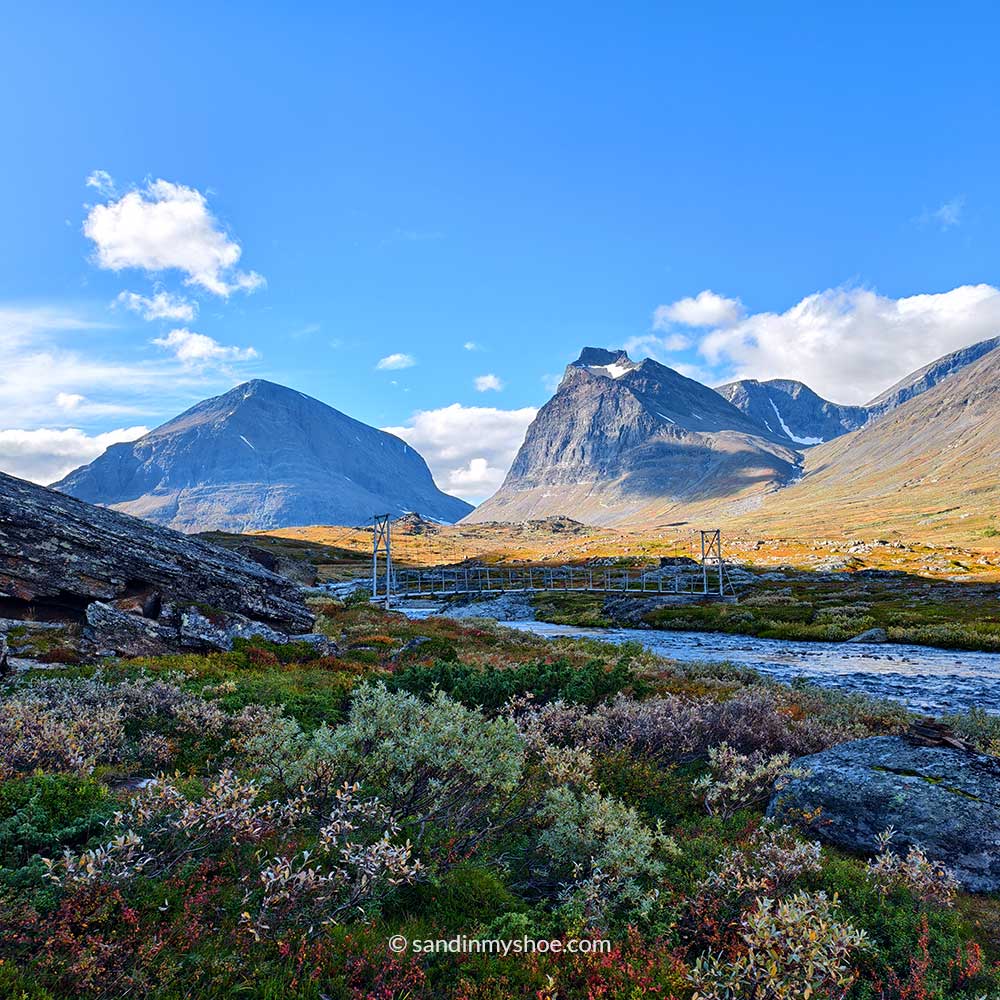
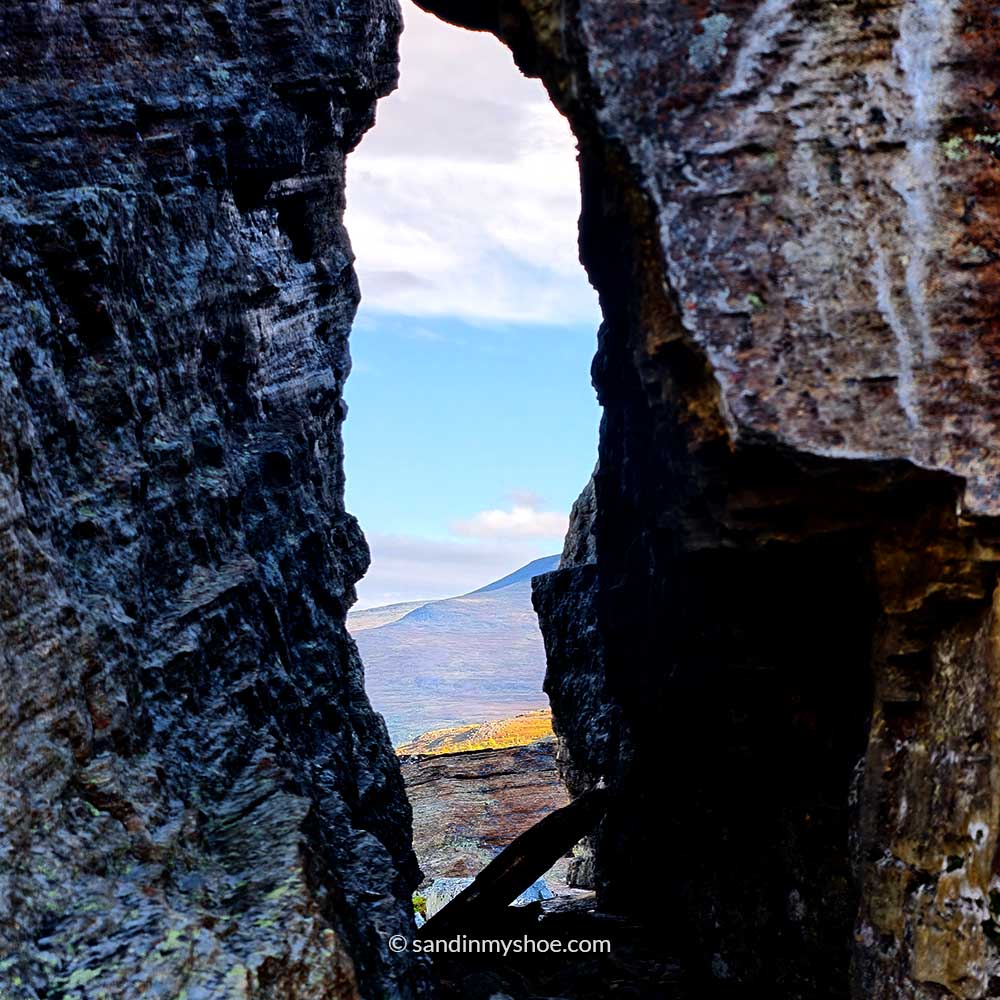
After getting back from the river, I went to gather some information about the summit and rented ice shoes so I could tackle the final section of the mountain, which was fully covered in black ice.
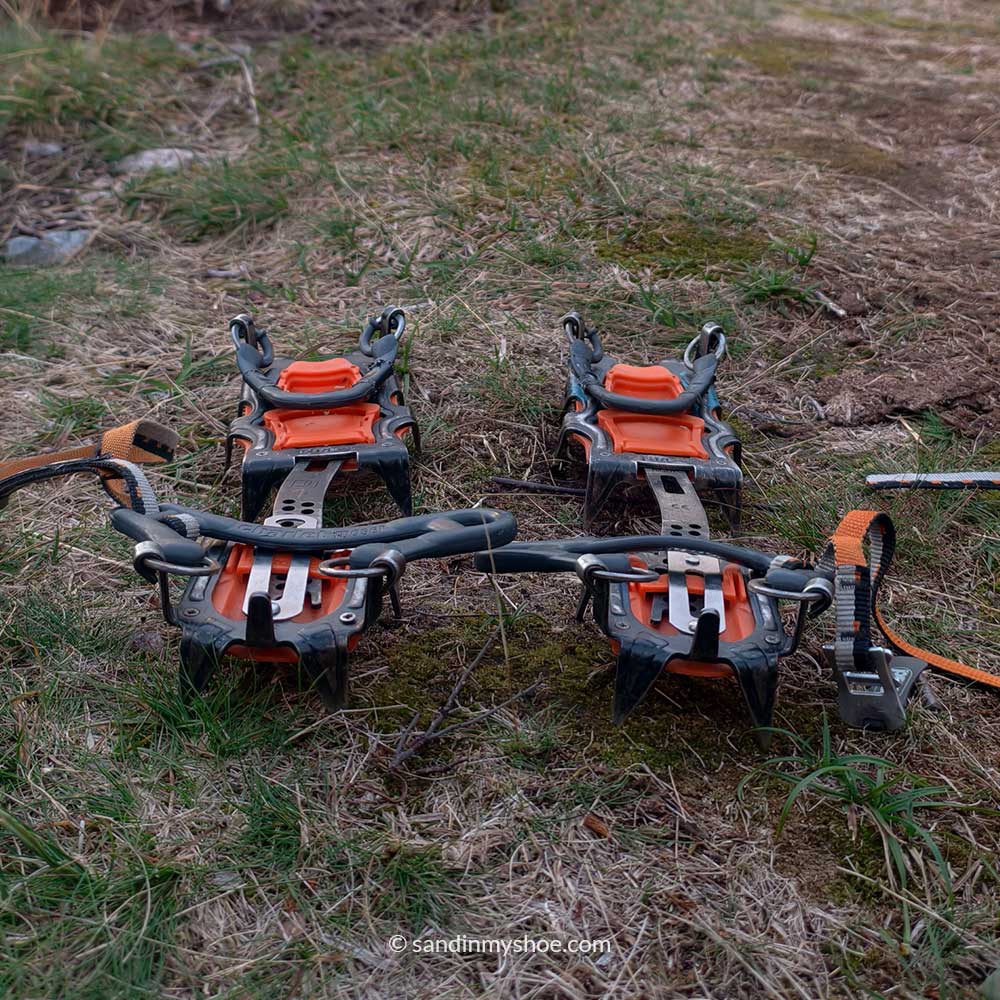
For most hikers, the climb up and down takes around twelve hours, with a recommended departure time of 06:00. I set my alarm for 05:00 and prepared one lunch for breakfast and another to take with me for the summit along with some snacks.
Day 3: Summit to Kebnekaise by the Western Route
I set off at 06:30 with a lunch in my stomach and another packed in my backpack. The sky was cloudy, the view limited due to mist, and I had only slept for four hours. Luckily, the rain hadn’t arrived yet.
My pack was light — just lunch, snacks, rainwear, ice shoes, and two liters of water. The last stop to refill water was at a bridge four kilometer into the hike; after that, I’d need to melt snow from the top of the mountain, but it wasn’t needed.
As I trekked through the mist, a herd of reindeer passed by. We exchanged casual greetings and continued on our separate ways. The trail was marked with red spray dots on rocks, though I got lost a few times. I could always find my way back with a hiking app, and I had brought a map and compass in case my phone died.
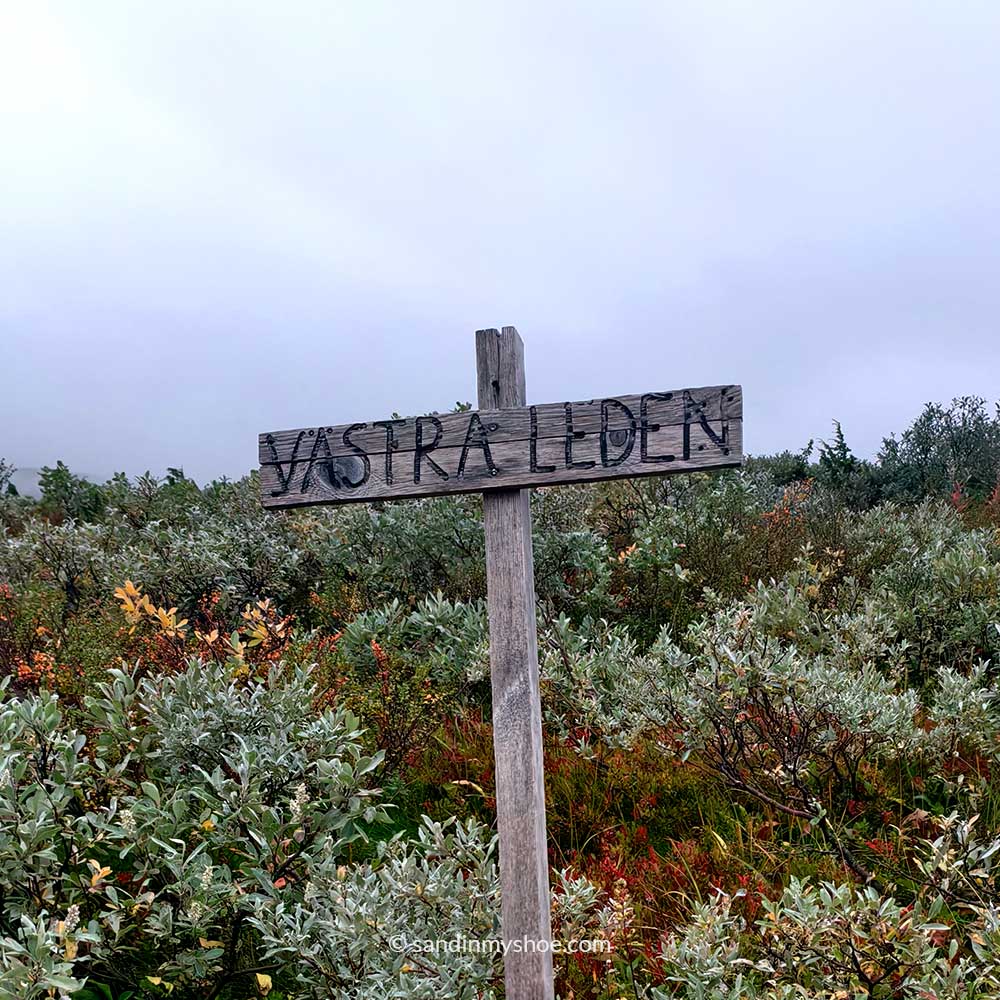
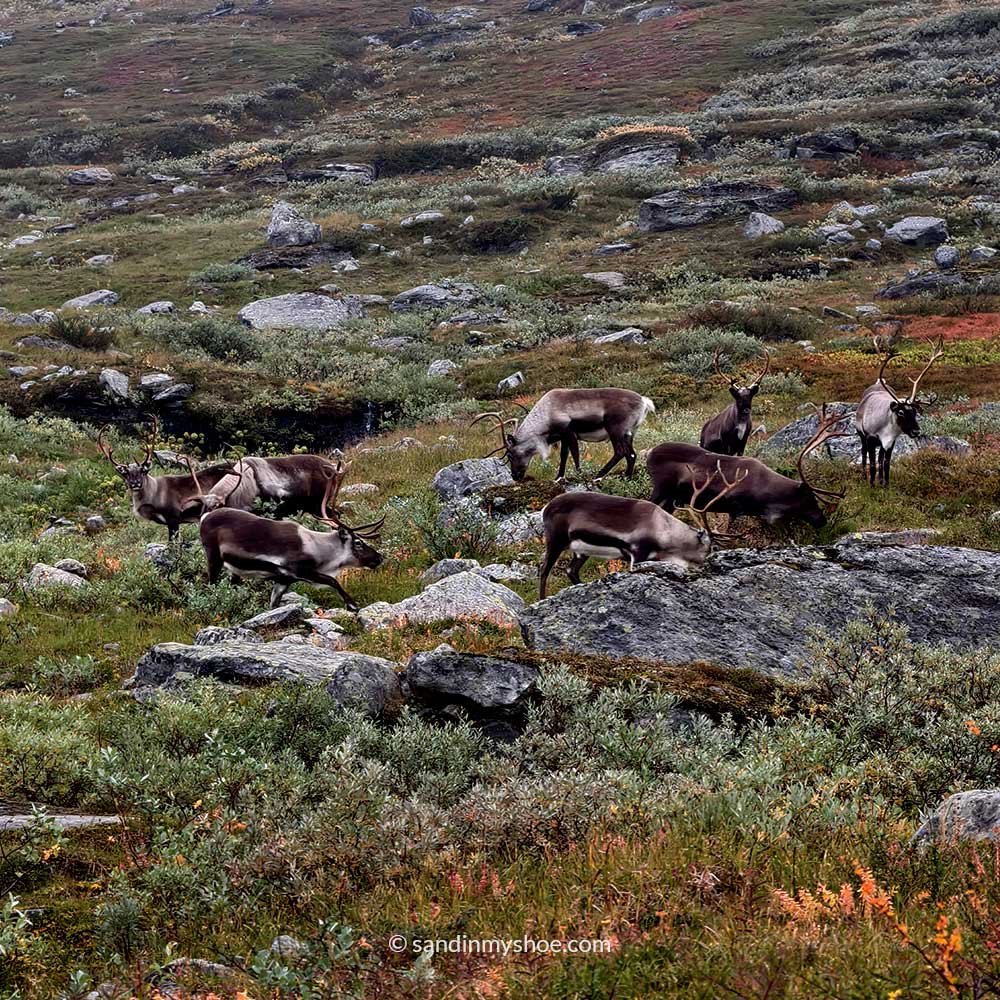
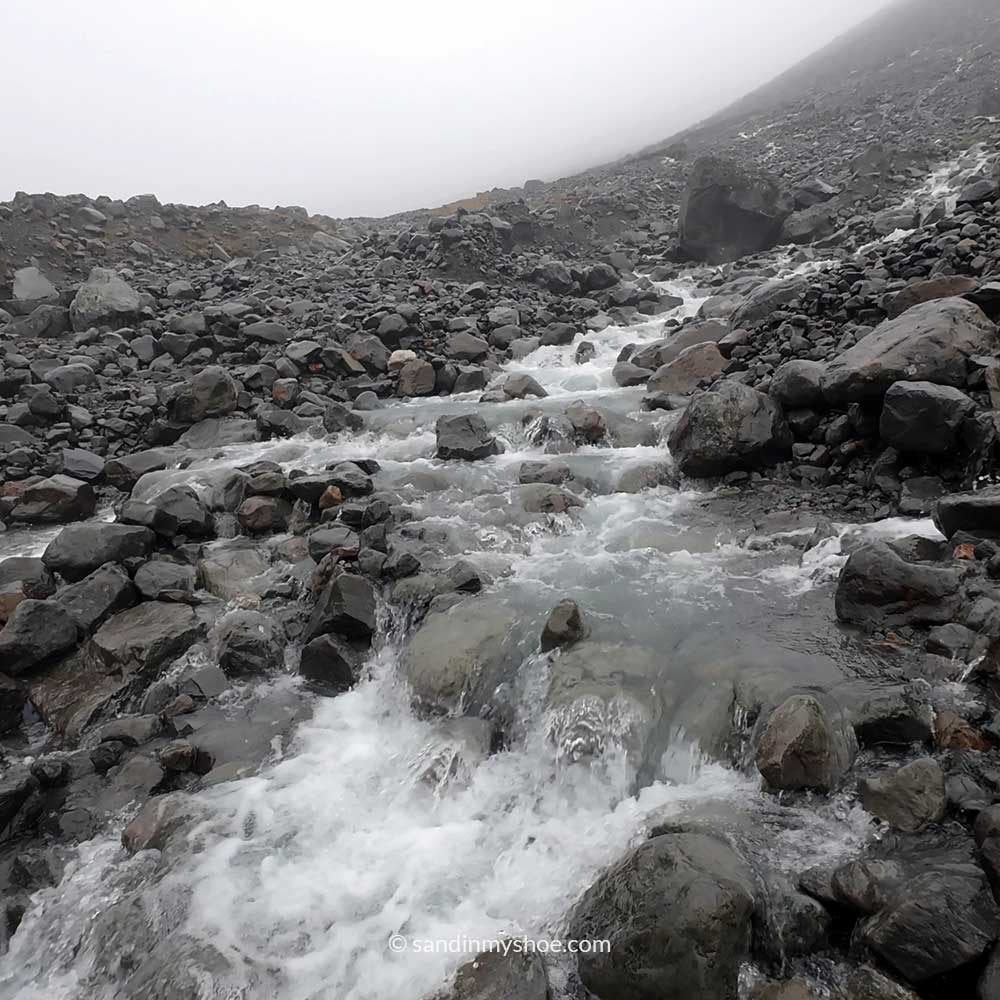
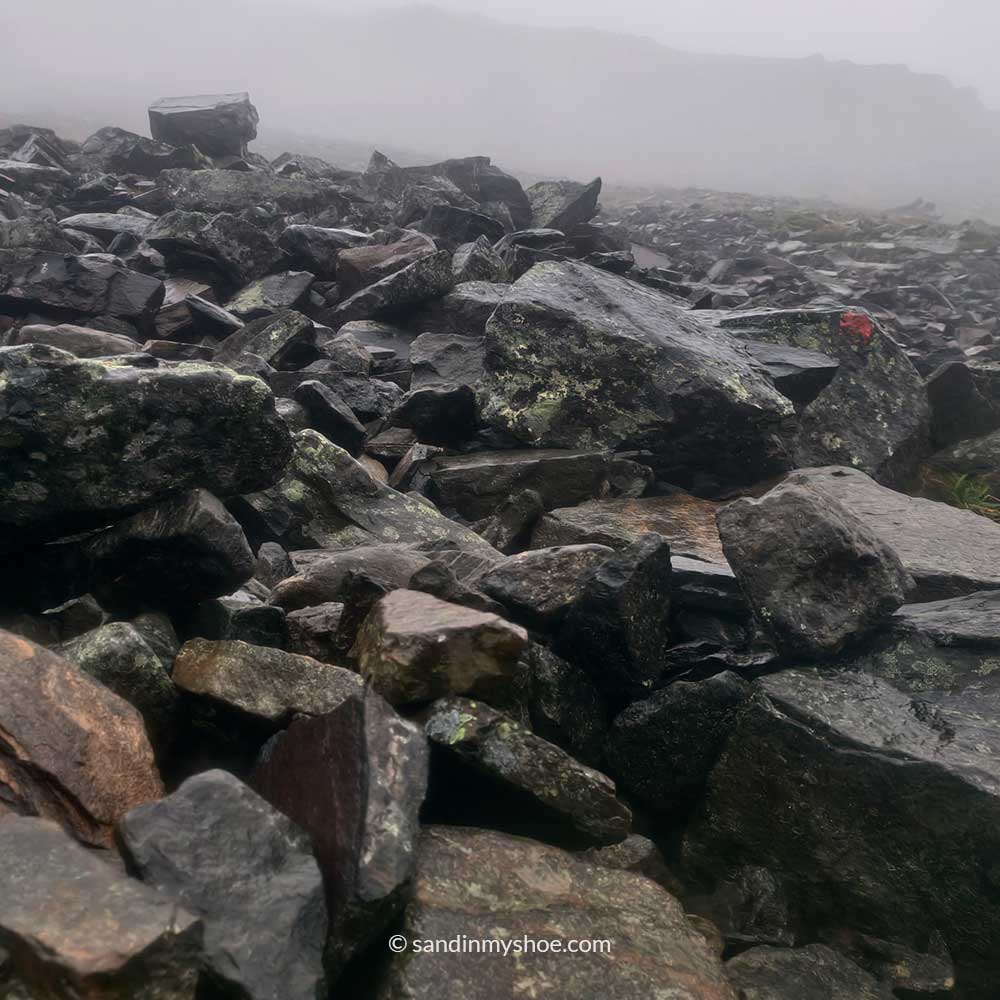
In the beginning, the path was earthy and easy, but gradually it became rockier, with the rain intensifying. Eventually, I was hopping between large, slippery rocks. Small rivers crossed the trail, and despite my efforts, my shoes got wet after a couple of hours. In hindsight, boots might have been a better choice than trail runners.
I met only seven people all day. Visibility was limited, sometimes improving briefly, but never giving a full view. The hike started with a smaller hill, then dropped into a valley covered with large stones, before climbing steadily again. I snacked on cookies and candy continuously to keep a steady flow of carbs into my legs.
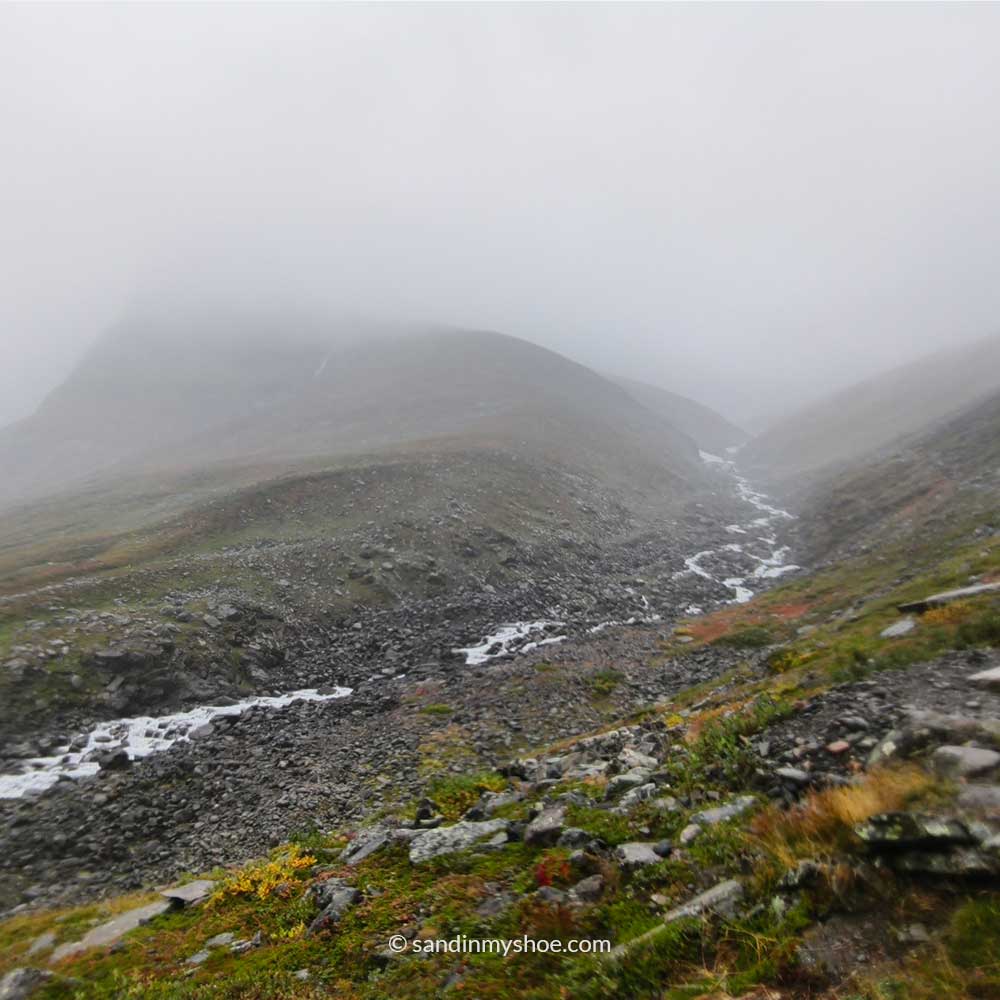
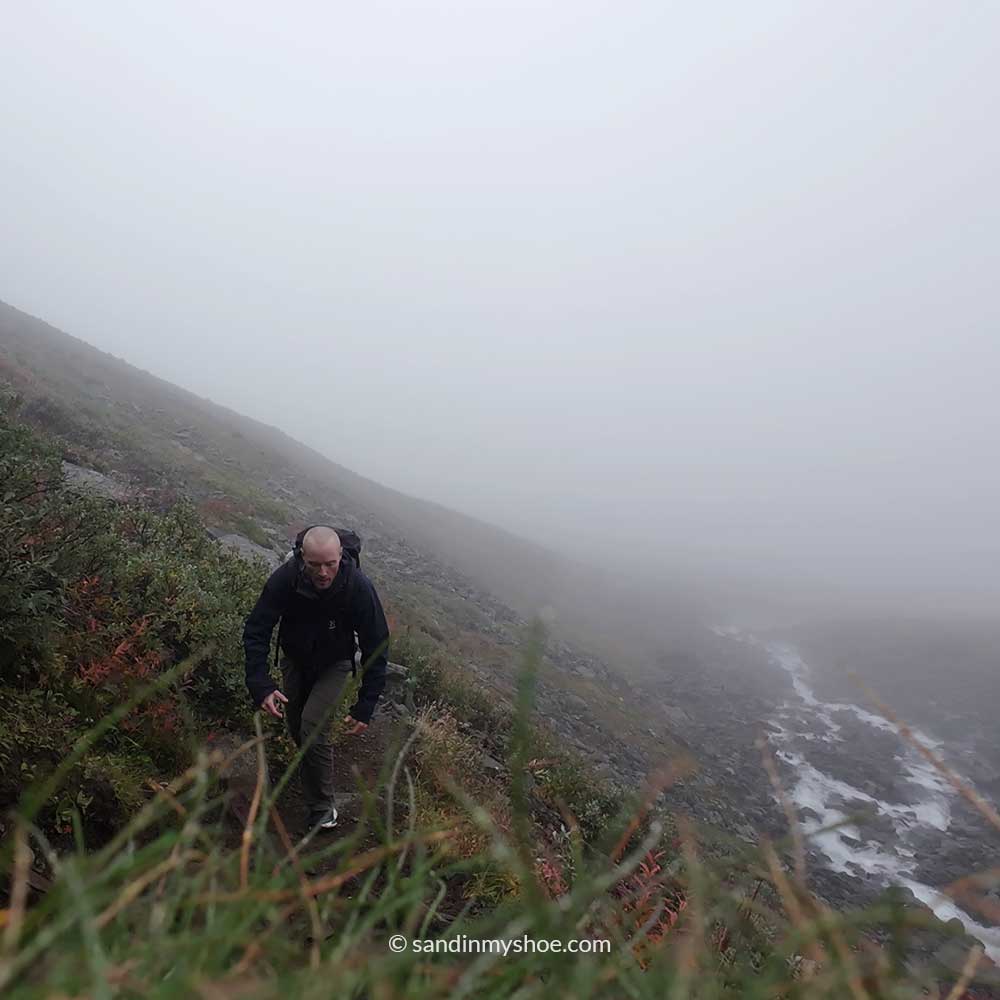
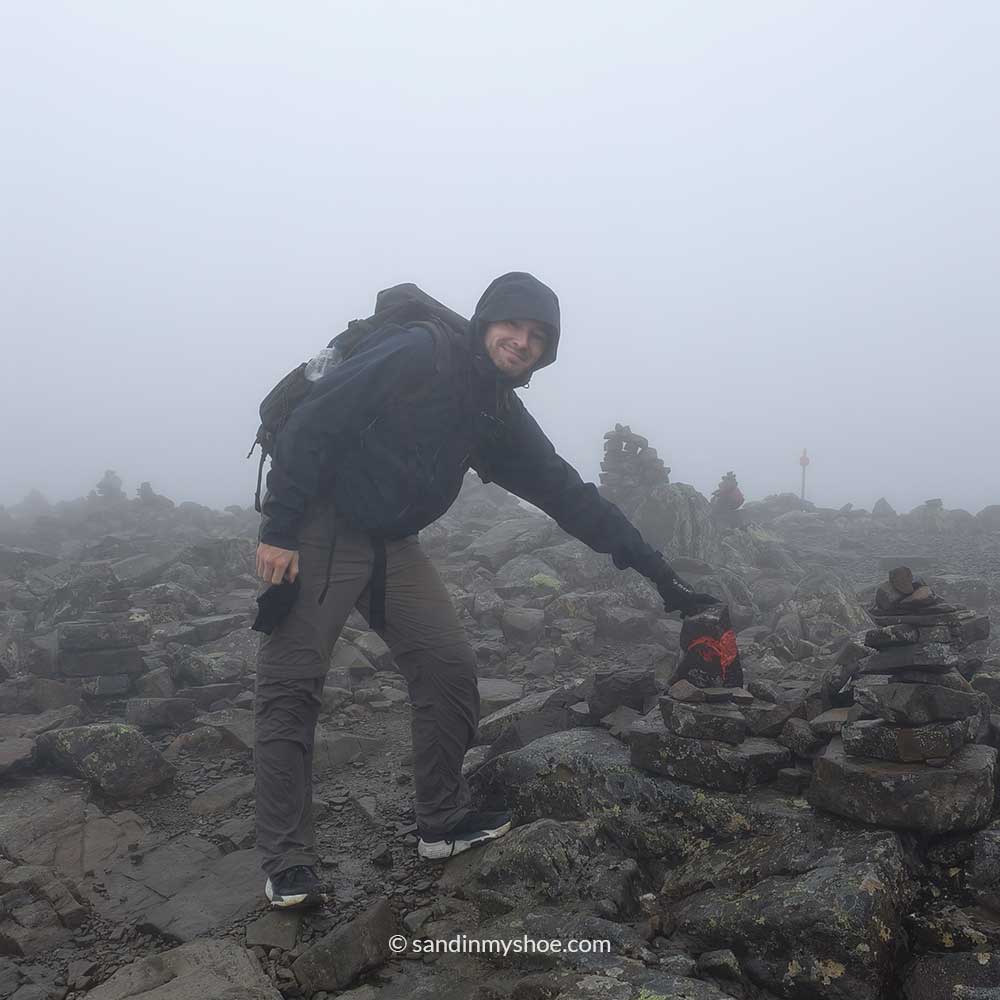
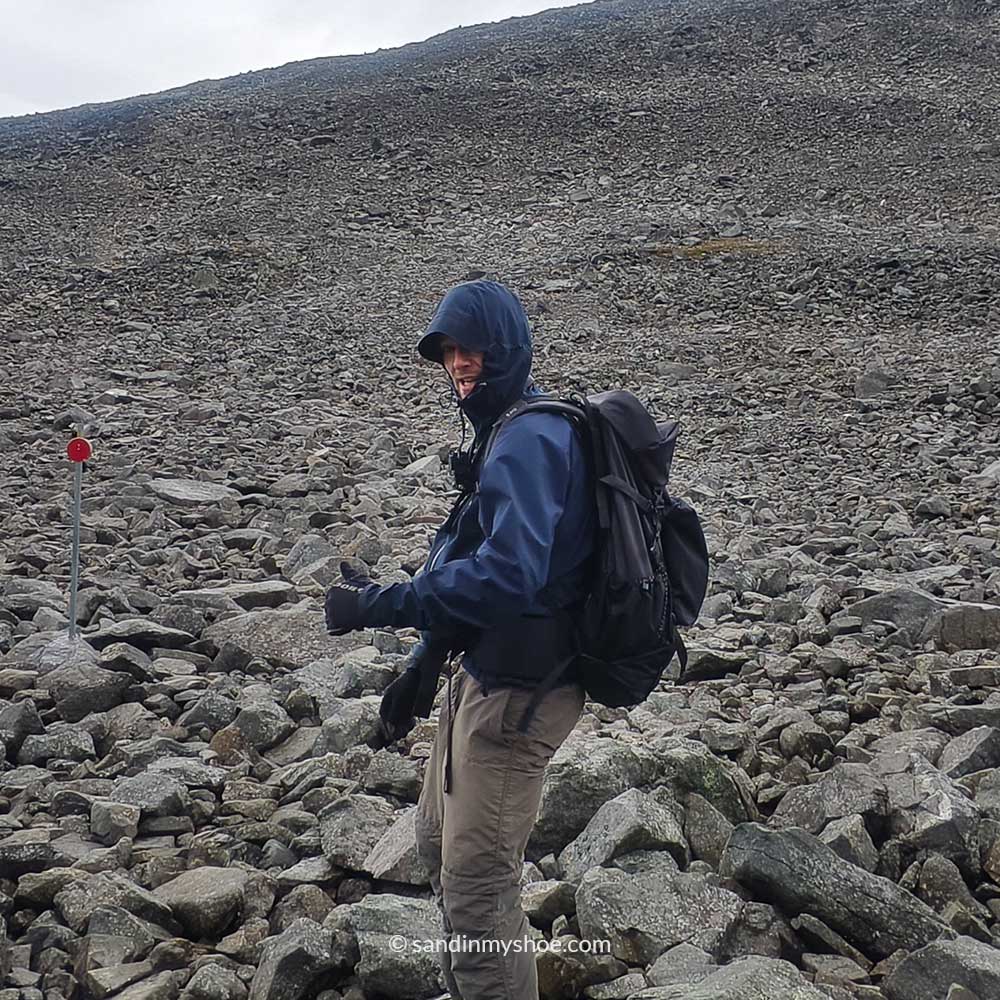
I reached the top cabin and had lunch there, forcing myself to eat quickly before my wet clothes made me cold. After navigating through the mist, I found the snow at the final stretch. I put on my ice shoes and continued to the summit. No one else was on the top, so I took precautions — in case of an accident, rescue would have been unlikely.
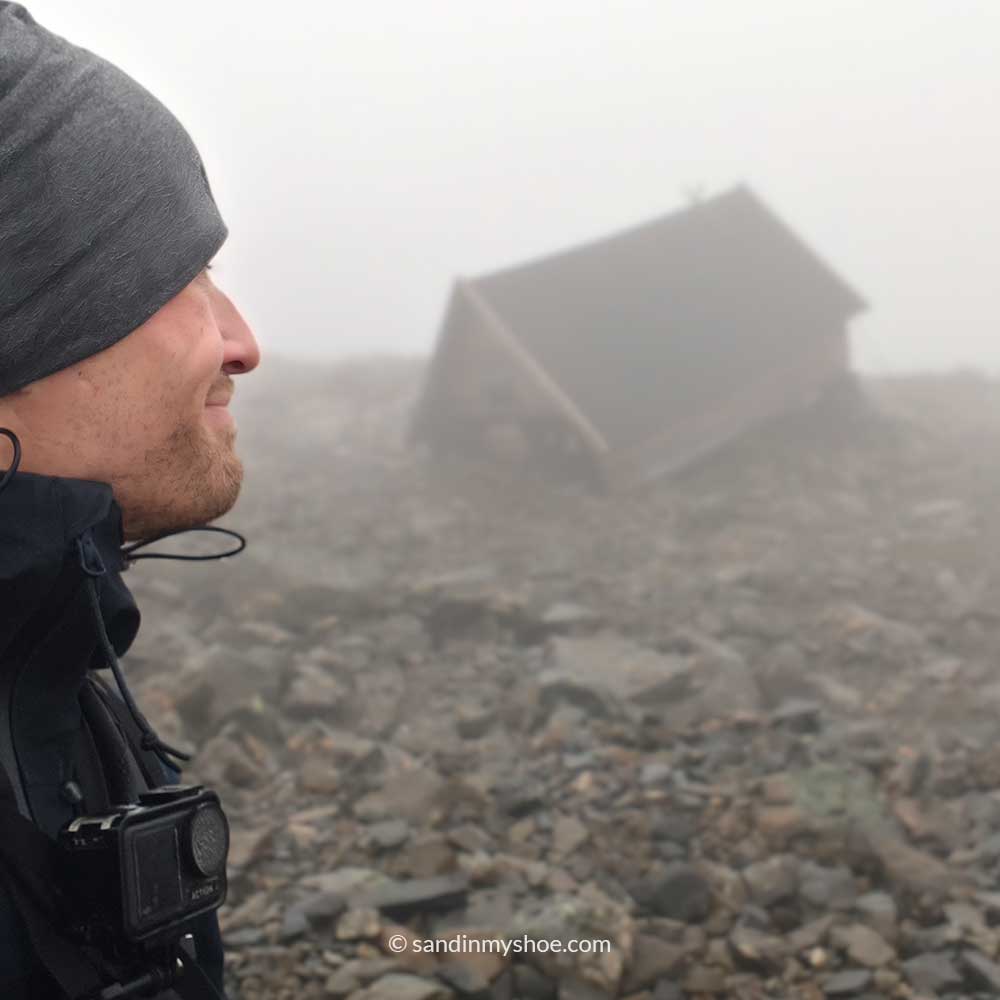
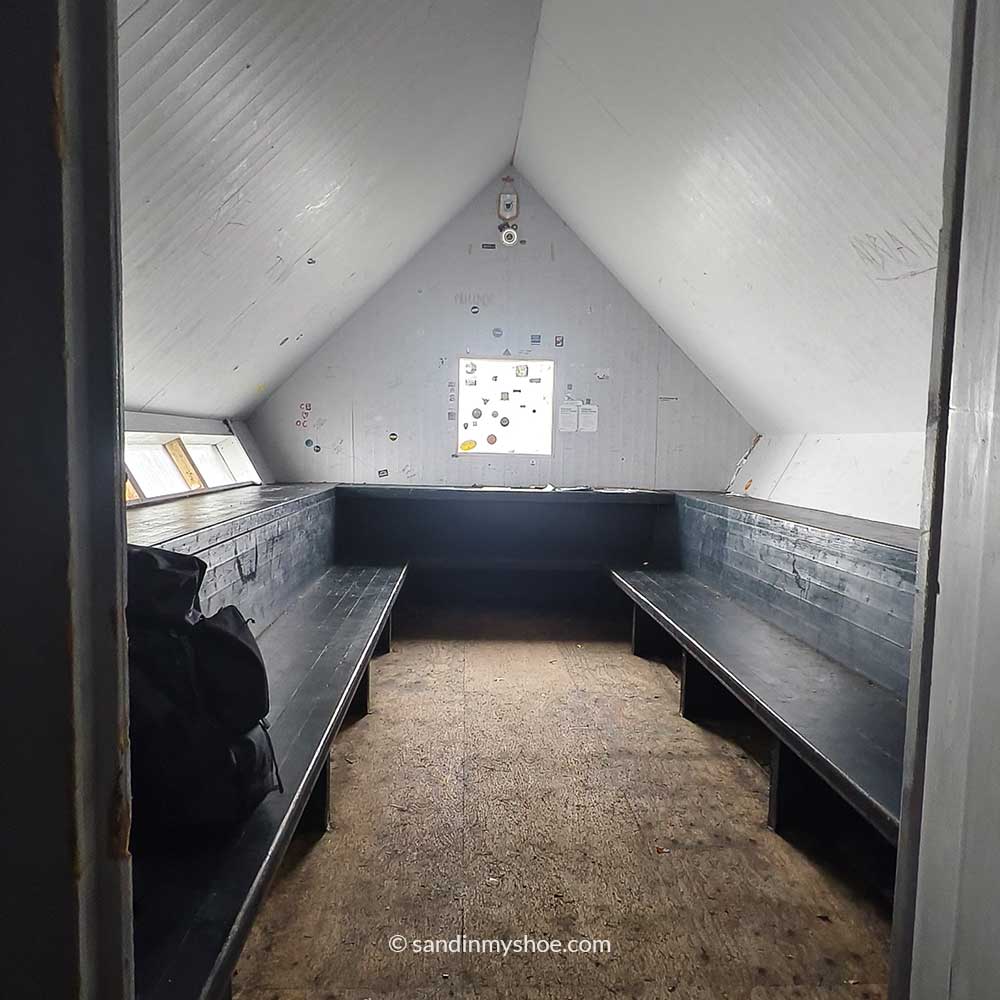
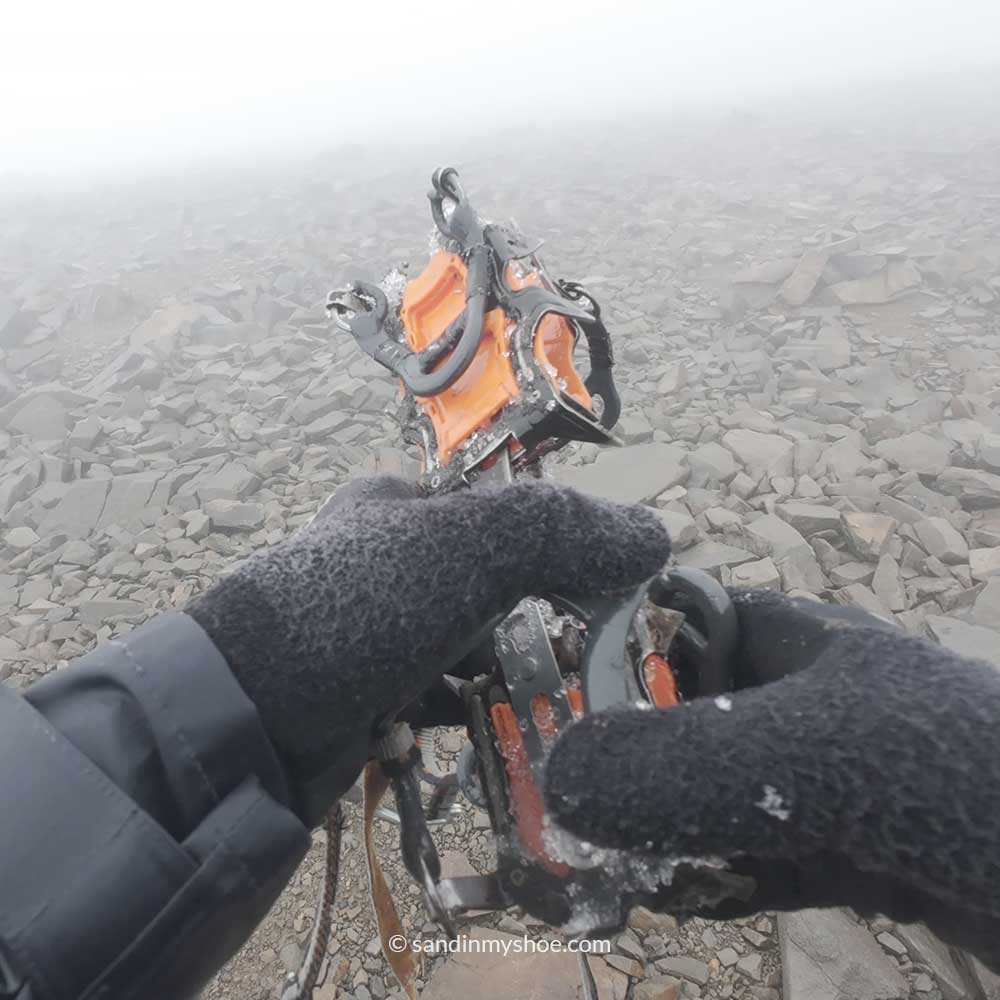
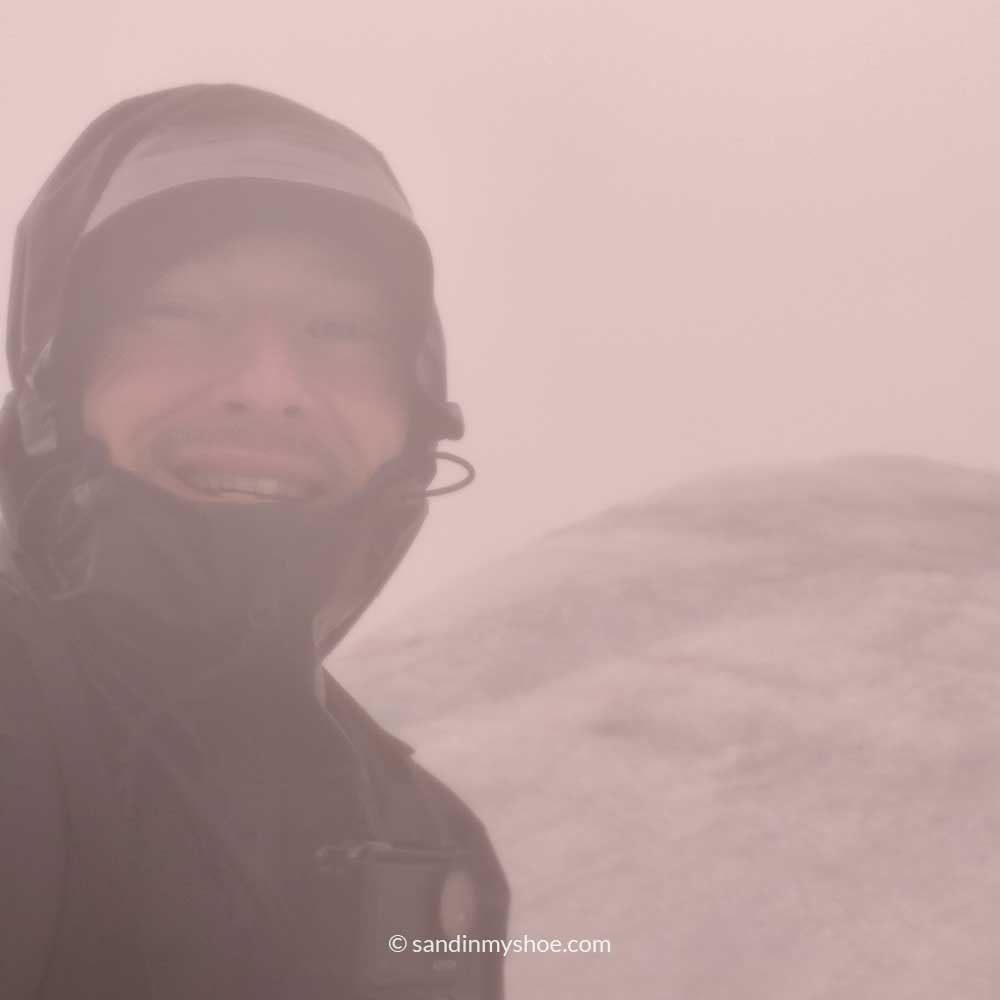
Reaching the top, despite the heavy mist and wind, felt incredible. After cycling 1,500 kilometers and hiking 29 kilometers, I had achieved my goal. Surprisingly, I felt okay physically, though the descent proved far more challenging.
Trekking down slippery, shifting rocks pushed my knees to the limit. I felt like giving up several times, but short breaks and sheer survival instinct kept me moving. When I finally returned to the mountain lodge, I was completely exhausted — my legs were worse than after the initial hike from Nikkaluokta.
I immediately went to the facilities to dry my clothes and shoes, take a quick sauna, and eat dinner. I could only stay briefly in the sauna, though, as I was too tired. With only one pair of pants and shoes, I had to walk barefoot with shorts back to my tent around 21:30 in 10-degree temperatures.
When I reached my tent, I discovered it had flooded — I had pitched it in a shallow pit. Rain poured, darkness surrounded me, and my sleeping bag was partially wet. I had to be practical. I moved everything, unpitched the tent, hung it to drain, and set up in a new spot. To stay warm at 10 degrees with wet gear, I used a 200-liter trash bag as a makeshift raincover, got inside it, and then crawled into my damp sleeping bag wearing a jacket.
It was damp and a bit uncomfortable, but my body’s warmth kept me from freezing. In my memory, the night passed quickly — though perhaps some details were conveniently forgotten.
Day 4: Hike Back to Nikkaluokta and Cycle to Kiruna
I started my twenty-kilometer hike back to Nikkaluokta in the afternoon and reached the destination after sundown—exhausted, but relieved to be back.
The next part was a 70-kilometer bike ride back to Kiruna. Normally a one-day ride, but it ended up taking me two days. On the first day, I managed just 35 kilometers. The next day, I was completely out of food, so I foraged wild blueberries and was generously offered a shot of liqueur by a friendly German camper. I finally arrived in Kiruna at 19:00 on the second day.
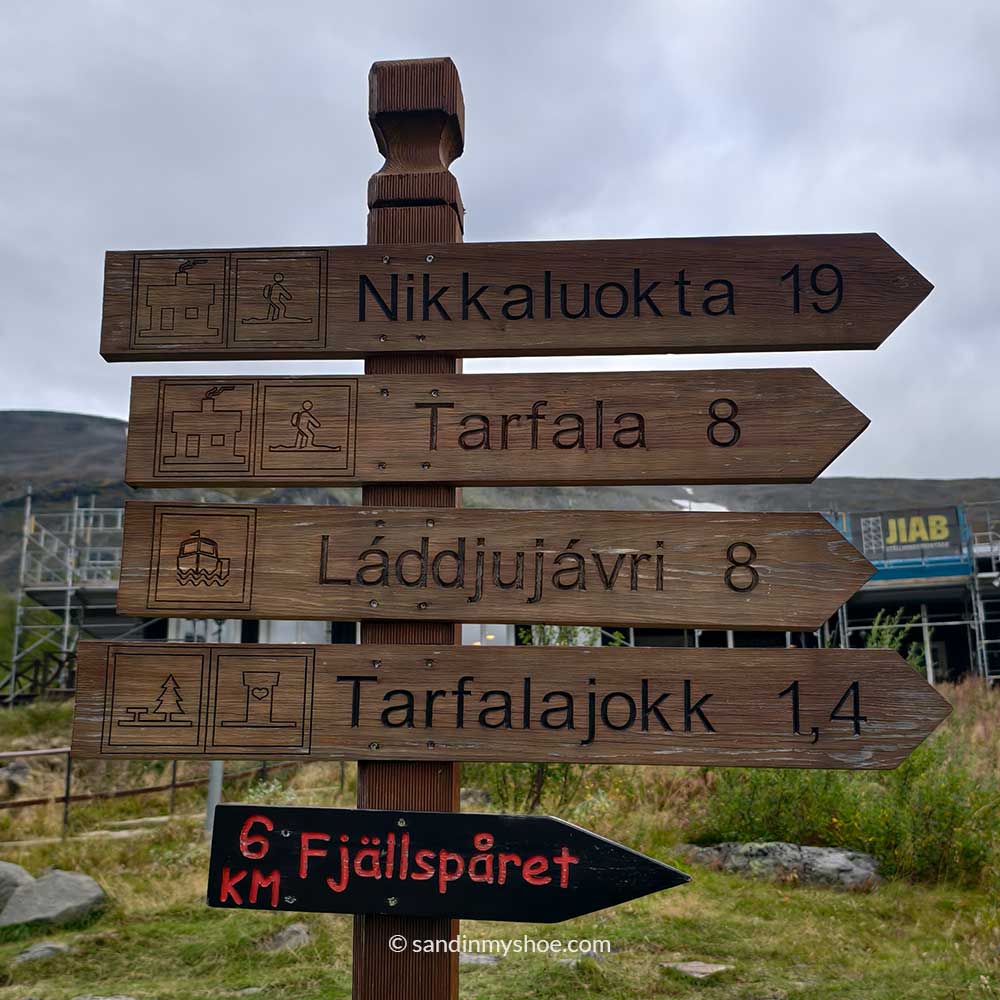
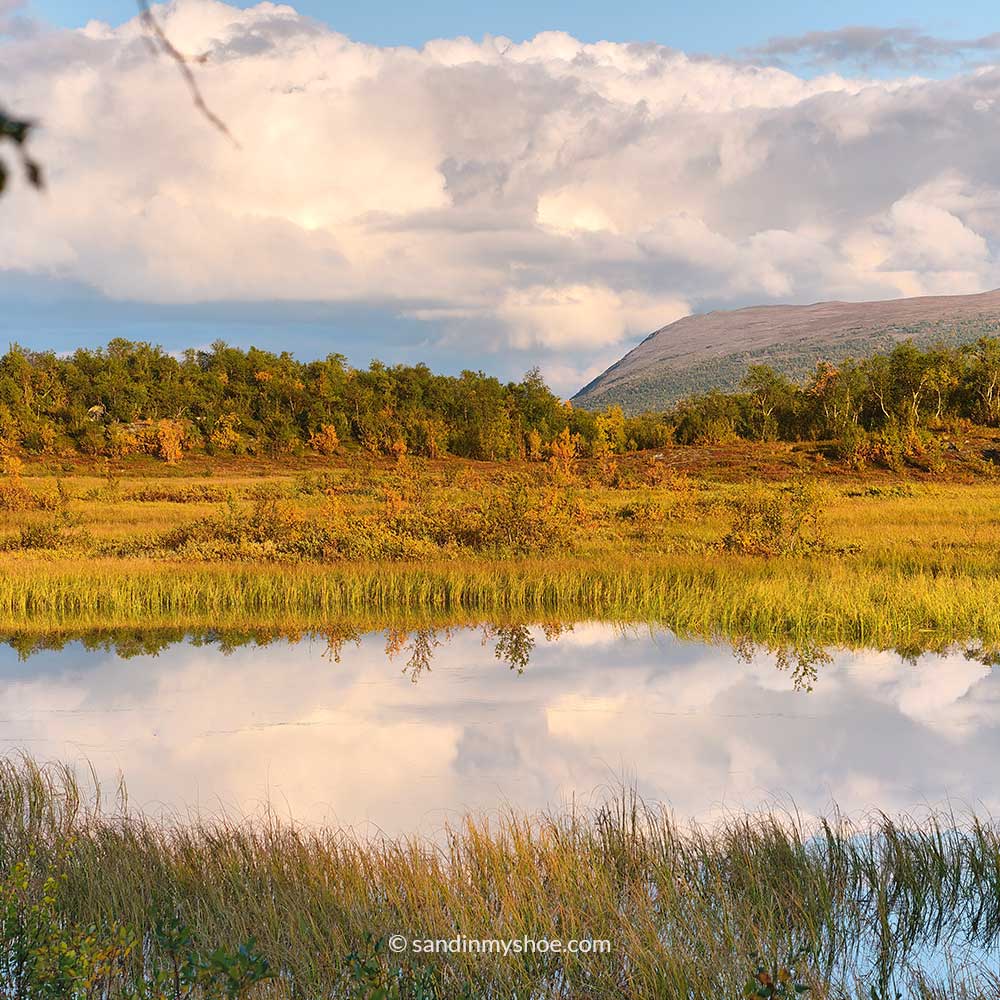
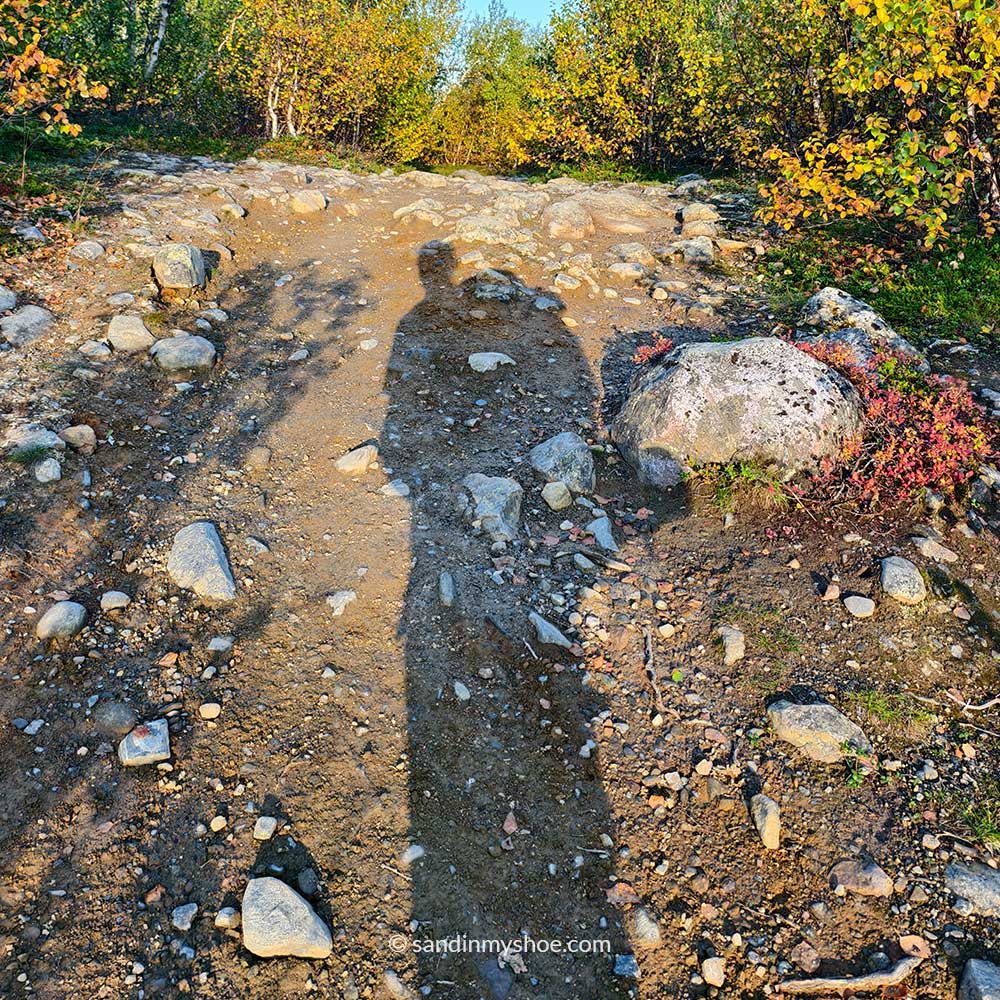
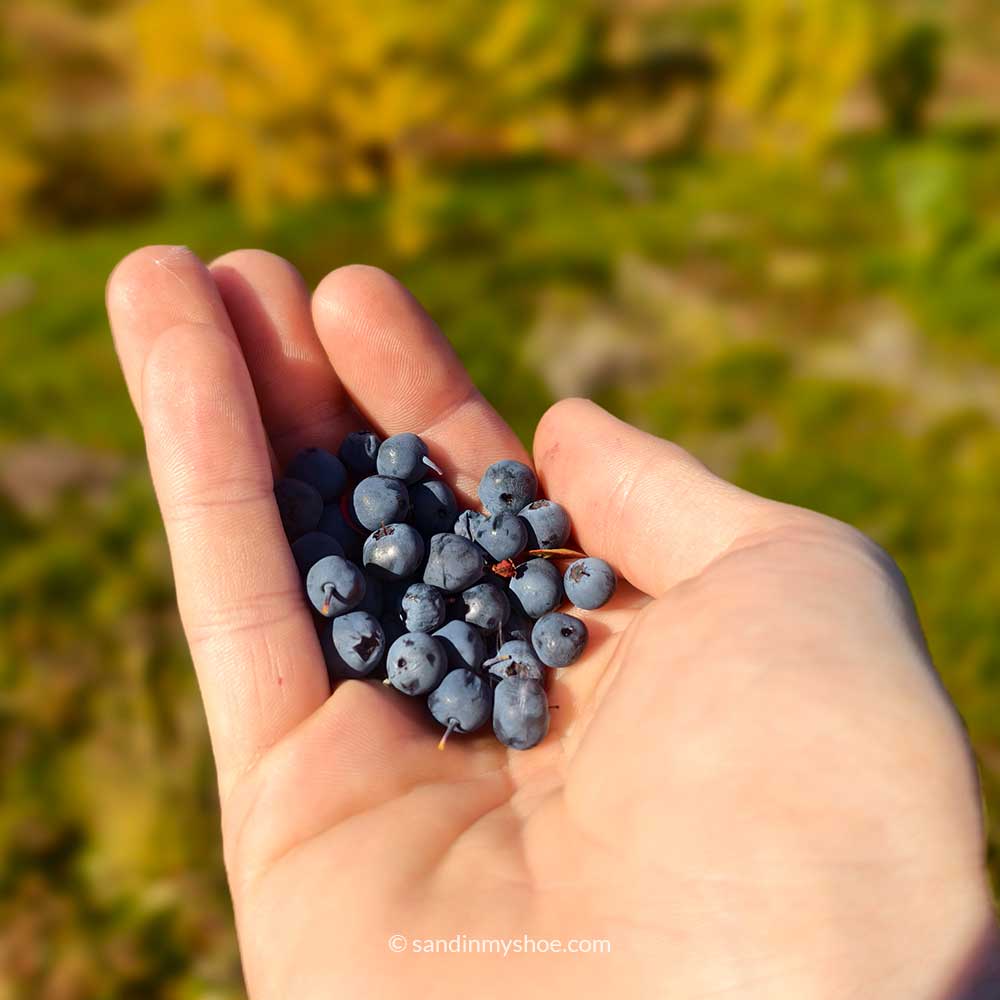
I had planned to take the train back to my city, Eskilstuna, but services had stopped due to flooding. I was stuck! I ended up staying in Kiruna for four nights, making the best of it, and spent one night in Abisko for more hiking before returning to my hometown.

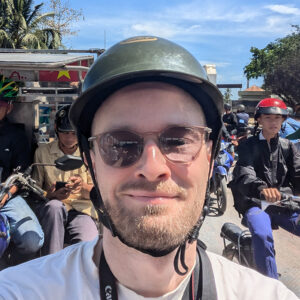
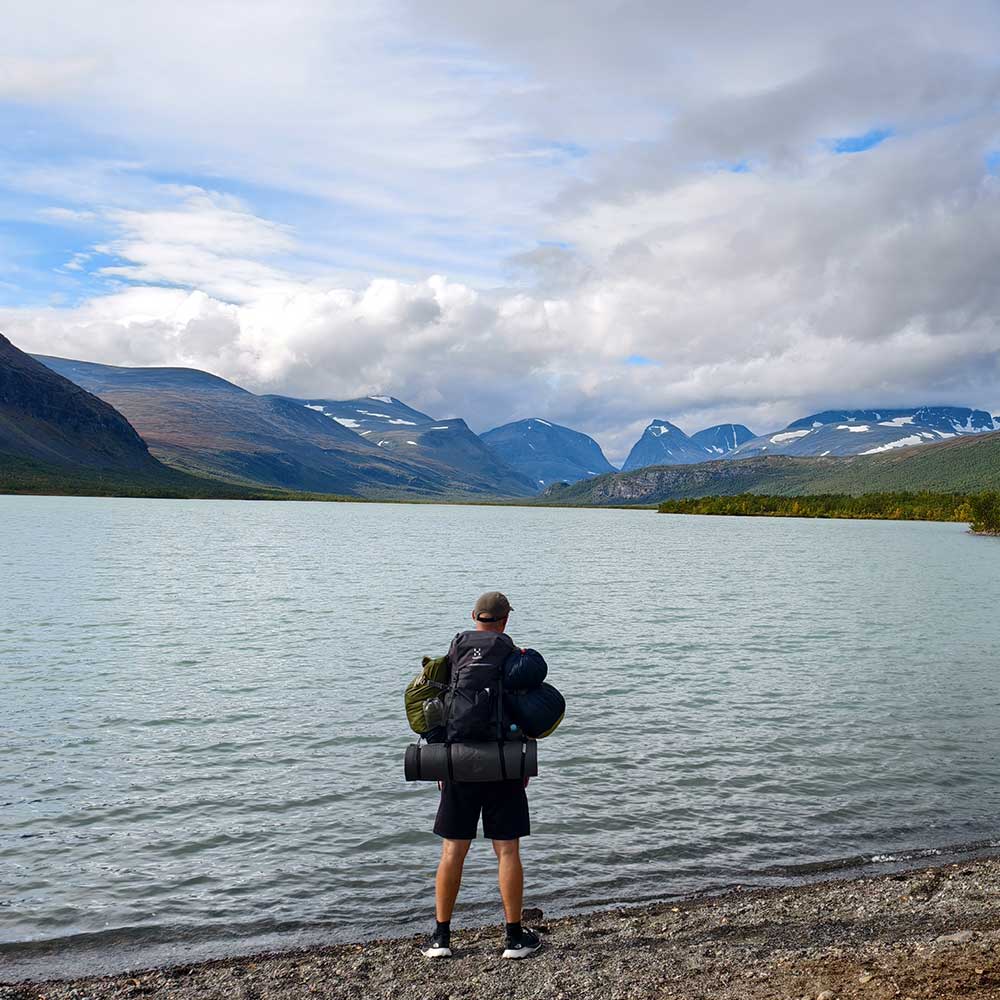
No comments yet, be the first one!
I appreciate hearing from you. If you have any suggestions, questions, or feedback, please leave a comment below. Your input helps ensure the information stays relevant and up to date for everyone.
Thank you for sharing your thoughts!